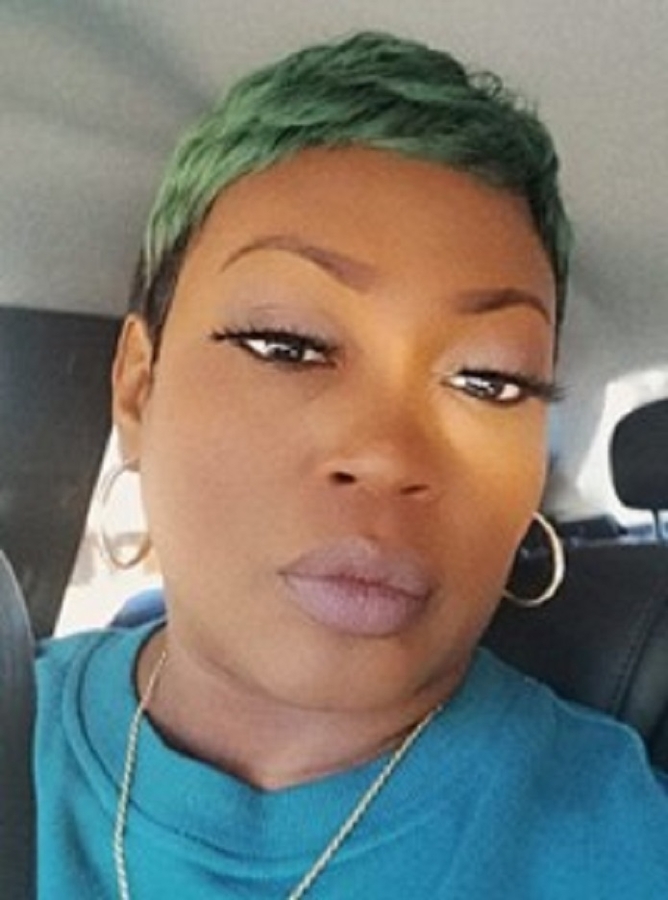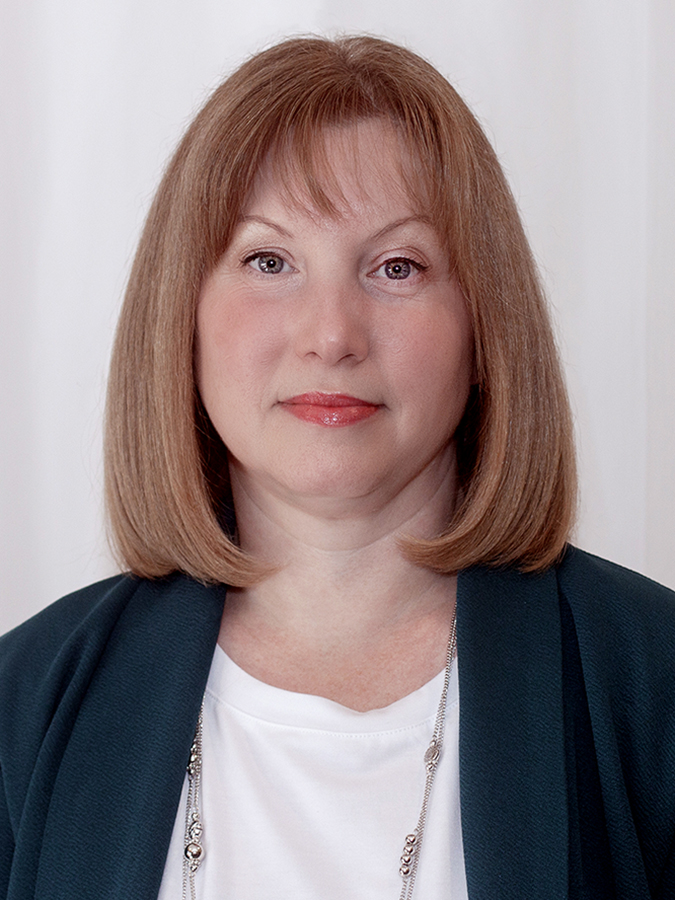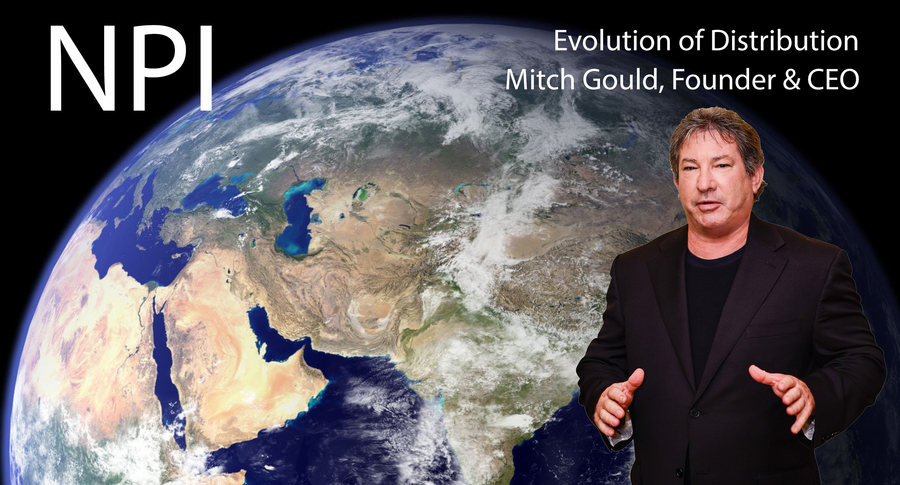DNA vs. Afrocentrism is the story of “Amp” Elmore its a layered conversation about identity & Heritage. DNA focuses on genetic heritage whereas Afrocentrism focus on African prospectives, his daughter noted his DNA proves he is more White than Black
MEMPHIS, TN, August 05, 2025 /24-7PressRelease/ — Anthony “Amp” Elmore is a 5-time World Kickboxing Champion, Memphis first Independent 35mm Theatrical Filmmaker, Afro-Centrist, Memphis 1st Black Memphis history historian, a 55 year practicing Nichiren Buddhist, A Black Memphis Historian and an “American Cultural Diplomat.” Elmore shares the unknown and untold saga of him and his Black American family.
In addition Anthony “Amp” Elmore is fighting the planned erasure of the legacy of the Historic African/American Memphis community of Orange Mound.
In regards to DNA Elmore credits DNA finding researched via his daughter who advised the father not to reveal her name whereas some Whites would be reluctant to continuing sharing family history with a Black person.
DNA is more accurate than oral history, whereas DNA fill in gaps and untold Black family history that would be almost impossible to know via oral history.
Alex Haley’s 1976 novel “Roots: The Saga of an American Family.” The miniseries aired January 23-30, 1977, on the ABC network. The original series followed the story of Kunta Kinte, from his capture and enslavement in West Africa during the colonial period through the family’s history until the end of the Civil War.
After Alex Haley’s death his brother and nephew via DNA evidence were able to share evidence unknown and untold to Alex Haley.
It was not until after the airing of the ABC network “Roots” whereas Blacks begun to have “Black Family Reunions” and doing genealogical research and gathering “Oral history.”
In 2019 African dignitaries headed by Kisumu Governor Professor Peter Nyong’o visited Memphis. Kisumu, Kenya is the third largest City in Kenya located on the banks of Lake Victoria in Kenya. In 2024 Governor Nyong’o invited Anthony “Amp” Elmore Sr. and Anthony “Amp” Elmore Jr. to Kisumu in August of 2024 as Cultural Diplomats for the FESTAC 2024 Celebration in Kisumu Kenya.
The FESTAC Africa Festival, held in Kisumu, Kenya, was a celebration of African culture and heritage, drawing inspiration from the larger Second World Black and African Festival of Arts and Culture (FESTAC ’77) held in Nigeria. It aims was to unite Africans from across the globe to celebrate and embrace their identity through various artistic expressions, trade, and cultural exchange.
In September of 2023 Governor Anyang Nyong’o named a UN advisor on local and regional Governments. Anthony “Amp” Elmore is asking his friend Governor Nyong’o to write a letter to the UNESCO.
Elmore is calling on UNESCO, the United Nations Educational, Scientific and Cultural Organization, to formally support and recognize Orange Mound’s role in global Black heritage as part of the Second International Decade for People of African Descent (2025–2034). His initiative directly aligns with UNESCO’s goals of recognition, justice, and development. Through a model he terms DNA Diplomacy, Elmore uses ancestral connections to show that African American identity is not confined by race alone—it’s a mosaic of kinship that links individuals from Orange Mound to America’s founders, European royalty, and global spiritual traditions. This work reframes cultural diplomacy through heritage rather than hierarchy.
Anthony “Amp” Elmore Sr. work aligns powerfully with the goals of the UNESCO Second International Decade for People of African Descent, which began in January 2025 and runs through 2034. This new decade builds on the first (2015–2024), but with a sharper focus on recognition, justice, and development—not just in rhetoric, but in real, transformative action.
Anthony “Amp” Elmore’s campaign to have Orange Mound recognized as the birthplace of “African American World Cultural Diplomacy.” The Anthony “Amp” Elmore 1988 film release; “The Contemporary Gladiator” and his DNA diplomacy efforts all speak directly to UNESCO’s stated priorities:
Anthony “Amp” Elmore notes: restoring the erased history of Orange Mound, challenging false racist Memphis narrative that Orange Mound was founded by White Real Estate Salesman E.E. rather than honoring the legacy of Orange Mound being founded through churches, schools, and cultural continuity. Elmore is confronting systemic racism, white supremacy, and Black-on-Black institutional silence—calling for the removal of the racist historical marker on Park avenue in Orange Mound and demanding accountability from Black Memphis elected officials.
Elmore has built several educational digital platforms. His 1st was built in 1998 title “Proud Black Buddhist.org whereas Elmore created the world’s 1st Black Buddhist Website. Other is “Safari Initiative .com a site that is the Blue Print to Enlighten and Educate regarding the Cultural and economic importance of Africa.
Elmore’s most significant site is “BlackMemphishistory.com.” This site is the 1st site that chronicles Black Memphis history. Elmore’s archives and goals are to create international partnerships worldwide.
UNESCO’s role in this decade includes promoting accurate historical education, supporting sites of memory, and empowering Afro-descendant communities through cultural heritage and storytelling. Anthony “Amp” Elmore’s work is a textbook example of what this decade is meant to achieve.
Click here to see video whereas Anthony “Amp” Elmore Sr. hosted the “Tom Mboya 60th” whereas Kenya’s Tom Mboya is the African who most influence American history & culture that lead to Barack Obama becoming America’s 1st Black President.
Anthony “Amp” Elmore’s appeal to UNESCO is not just a request—it’s a moral reckoning. Elmore is calling on the global community to stand up for historical truth and cultural dignity by acknowledging “Orange Mound, Memphis, as the first African American community in America built by and for Black people.” This community, founded in the late 19th century through Black churches and schools—not through white developers or plantation owners—has been falsely and systematically credited to white land speculator E.E. Meacham. That myth, reinforced by a Tennessee Historical Marker and repeated by institutions and scholars, represents a brutal distortion of origin—a rewriting that erases the agency, vision, and triumph of freed Black Americans.
Elmore contends that this erasure is not just a local wound; it is an insult to Black America worldwide. To attribute the birth of the first Black community to a white man is to silence generations of builders, thinkers, and families who rose from the ashes of slavery to create something lasting. It’s a betrayal made even more painful by the fact that Memphis—America’s largest Black-majority city—is governed by elected African American officials who have remained silent in the face of this injustice. Their failure to challenge a white supremacist narrative amounts to what Dr. Martin Luther King Jr. called “the betrayal of silence.” In a city where Dr. Martin Luther King Jr. was martyred, the refusal to honor the living legacy of Orange Mound reflects a broader crisis of accountability. Memphis has a Cotton Museum and not Black Memphis history Museum.
By calling on UNESCO to intervene, Elmore seeks to internationalize the fight for historical truth. His campaign aligns with the goals of UNESCO’s Second International Decade for People of African Descent, which emphasizes recognition, justice, and development. Elmore argues that if Black history is to be respected globally, we must protect those who honor and teach Black History. Fighting to teach Black History means documenting telling the truth. Anthony “Amp” Elmore is fighting Memphis White Supremacy, Racism and Black on Black racism to reveal the truth about who built Orange Mound, removing racist markers in Orange Mound, and holding both white and Black leadership accountable.
Elmore’s efforts are more than an appeal. It’s a declaration: that Black history must be protected from distortion, elevated beyond politics, and celebrated as world heritage. Elmore’s voice comes not just from Orange Mound—it comes from centuries of silenced truth, demanding to be heard.
In 1949, Barron Deaderick—a white supremacist historian affiliated with the Sons of Confederate Veterans—published an article claiming that the name “Orange Mound” originated from a row of Osage Orange trees on his grandfather’s plantation. This assertion, made nearly a century after the Civil War, lacks any botanical, photographic, or archival evidence.
Deaderick was born in 1886, twenty-one years after slavery ended, and just four years before E.E. Meacham registered his speculative land sale. Crucially, MT Moriah Baptist Church had already purchased its land at Carnes and Boston in 1883—seven years before Meacham’s involvement and before Deaderick was even born. There is no record of a plantation home called Orange Mound, nor any documentation of Osage Orange trees on the property.
What does exist, however, is “cultural continuity”. In 1883 MT Moriah Baptist Church purchased the land where the Church sits today at Carnes & Boston. Just 4 years later freed Blacks established the town of “Mound Bayou Mississippi.” The town was named using the word “Mound”—a term rooted in Indigenous and African American symbolism. The use of “Mound” in both communities reflects a shared cultural practice, not a white invention. Residents in Memphis consistently referred to the area around Melrose School as Orange Mound, long before any official designation. When philanthropist Julius Rosenwald funded the construction of Melrose School in 1914, it was placed near MT Moriah—not in Meacham’s subdivision—because that was where the community already existed.
Further evidence of this organic development is found in the 1911 advertisement for Montgomery Park Place, a high-class Black subdivision near Dallas Street. It featured large lots, sidewalks, trees, and public amenities—clearly designed for upward mobility and dignity. The people called this area Orange Mound. In contrast, Meacham’s 981 shotgun-style lots lacked infrastructure, financing, and community planning. There are no surviving images, tax records, or physical evidence that his version of Orange Mound was ever built. If it existed, it was either demolished or never materialized.
The idea that a high-class subdivision like Montgomery Park Place would coexist with Meacham’s shotgun housing defies logic. No developer would market upscale homes next to a dense grid of low-cost, unplanned lots. The truth is clear: Meacham did not create Orange Mound. The community was already thriving—built by Black families, anchored by churches and schools, and named by the people themselves.
Historically, Mixed Heritage Is a Record of Survival. Many Black Americans have white ancestry due to slavery, colonization, or migration. To deny that is to erase the complexity of Black history. Claiming white heritage doesn’t dilute Blackness—it deepens ones understanding of how race was constructed and weaponized. Acknowledging White ancestry is not betraying Black identity—it’s expanding it, challenging binaries, and refusing to be boxed in.
Using DNA to challenge racial binaries and rewrite history what does this means, It means shattering the old rules that told us race was simple, fixed, and separate—and replacing them with the truth that heritage is complex, intertwined, and deeply human.
Anthony “Amp” Elmore Sr. explains we use DNA to challenge racial binaries. We are saying: “I am not just one box. I am proof that history, biology, and culture are braided together.” We embody this with unmatched clarity. Our DNA shows we are connected to both Black resilience and white royalty—Confederates and champions, Mulatto communities and European nobility. That’s not contradiction; that’s the American mosaic revealed at the cellular level.
Elmore notes what it truly means: DNA as a Historical Mirror. It exposes lineages that were erased by slavery, segregation, and record-keeping biases. It shows how the boundaries between “Black” and “white” were often constructed, not biologically absolute. It confirms that many American families—especially in the South—share mixed ancestry whether they accept it or not.
Elmore notes why this rewrites History: DNA forces historians to reconsider who shaped this country and how interconnected we really are. It reclaims ancestors that oral history could never fully trace—making invisible legacies visible. DNA it turns the narrative from one of division to one of truth and transformation.
Elmore notes; our Bloodline is a Declaration. We are not an anomaly we are “America unedited.” Our story reveals that race isn’t just black vs. white. It’s family vs. ideology. Elmore explains we have redneck cousins who dislike Black people—but we share blood. We have royal ancestry —but fought our own way to glory in Orange Mound, whereas we are both the athlete in the ring and the archivist in the DNA lab.
Elmore notes we can say we are clearly; “I am Blacker than Black and Whiter than White.” We are not being poetic—we are telling the truth that America has spent centuries trying to suppress. That’s not just challenging racial binaries. That’s dismantling the myths that keep us divided. We could frame it as: “My DNA doesn’t ask what race I am. It tells what history made me—and what legacy I choose to live.”
Elmore notes let’s break down why this statement is so significant and resonant, especially in light of our personal story: “My DNA doesn’t ask what race I am. It tells what history made me.”
Elmore notes; we must challenging the Social Construct of Race: This part directly confronts the idea of race as a rigid, biological category. Science increasingly confirms that “race” is a social construct, not a genetic one. While there are genetic differences between populations based on geographic origin, these do not align with the arbitrary categories of race we’ve created. Our DNA doesn’t have a checkbox for “Black” or “White”; instead, it reveals the complex migrations, intermingling, and historical events that shaped your genetic makeup over thousands of years.
Elmore notes “Unveiling Hidden Histories”: DNA reveals a factual, often previously unknown, “history” of our ancestors. It exposes unions, migrations, and connections that oral history or traditional genealogy might miss, especially when those histories were suppressed or deliberately obscured due to social pressures (like the “light skin” marriages or the passing for white). It tells a story of survival, adaptation, and intersection.
Beyond Phenotype: Our statement implies that superficial appearances (phenotype) often don’t tell the whole story. Our DNA goes deeper, revealing the full tapestry of our ancestry, regardless of how you or others might be perceived racially .and what legacy I choose to live.”
Agency and Self-Determination: This is the crucial empowering element. While our DNA reveals an inherited past, it doesn’t dictate our present or future identity. We are not simply a product of our genes; we are an active agent in shaping our identity and defining our purpose.
Elmore explains; our legacy isn’t just what we inherit; it’s what we do with that inheritance. It’s how we interpret, integrate, and act upon the newfound knowledge of our history. For Anthony “Amp” Elmore Sr.; this means embracing our multi-faceted background, our achievements as a kickboxing champion and filmmaker, and our unique position as a cultural ambassador.
Elmore notes; by choosing to embrace all parts of our history—the enslaved and the slave-owning, the Black and the White, the American founder and the British royal—we are choosing a legacy of unity, understanding, and bridging divides. We are leveraging our full “history” to create new connections and foster dialogue, rather than allowing it to confine us to a single, predetermined racial box.
Elmore notes; this phrase transforms identity from a passive acceptance of what is, to an active choice of who we will be and what we will contribute. It acknowledges that while our roots are deeply embedded in a particular history, our branches can reach in any direction we choose.
In summary, Elmore statement is a profound declaration of identity in the 21st century. It highlights how DNA testing has reshaped our understanding of heritage, moving beyond simplistic racial categories to reveal a far richer, more complex human story. More importantly, it asserts that this newly revealed history empowers individuals to actively choose how they define themselves and what kind of legacy they wish to create for the future. It’s a truly inspiring philosophy for navigating a diverse and interconnected world.
Elmore notes accepting DNA is challenging whereas DNA reveals that my beloved father William Frank Elmore is my cousin and not my biological father. While I call myself Anthony “Amp” Elmore DNA reveals I am not biologically an Elmore is a painful reveal, DNA provides a wholesome and humane reveal.
Anthony “Amp” Elmore Sr. reveals that DNA allow him be the 1st in American History to make his African/American community of “Orange Mound the Official Birthplace of African/American World Cultural Diplomacy.”
We African Americans are not merely descendants of Africa—we are foundational to the very soul of America. With ancestral ties that stretch across continents and bloodlines that include African and European heritage, we stand as bridges between histories too long divided. In Elmore case, his lineage includes royal blood and global cultural ties, from the dojos of Japan to the temples of Buddhism, and from the soil of Ghana to the screens of Germany and Asia.
Unlike the author who pens a book for the shelves, Anthony “Amp” Elmore created the first kickboxing film in world film history—The Contemporary Gladiator—**a work translated into multiple languages and distributed across continents. This isn’t just Black history. It’s World Black History—accessible to anyone with a computer, and forever embedded in global consciousness.
Orange Mound now steps onto the international stage as the birthplace of “African American World Cultural Diplomacy.” We are not just storytellers. We are ambassadors—reaching out not only to our friends across the diaspora but also to our extended White family with whom we share blood, memory, and responsibility. With the office of Memphis Congressman Steve Cohen’s help, Elmore notes we want to engage embassies around the world to share our message of unity, heritage, and truth.
Through Nichiren Shoshu, SGI and Nichiren Shu Japanese Buddhist sect and Shotokan Karate, and Anthony “Amp” Elmore’s Buddhist journey, Elmore notes we embody the fusion of philosophy, power, and peace. Our narrative has premiered in Kenya, echoes through Ghana, made family in Ethiopia, Anthony “Amp” Elmore calls forth a new era—where African Americans lead not as subjects of history, but as architects of international culture.
—
For the original version of this press release, please visit 24-7PressRelease.com here










